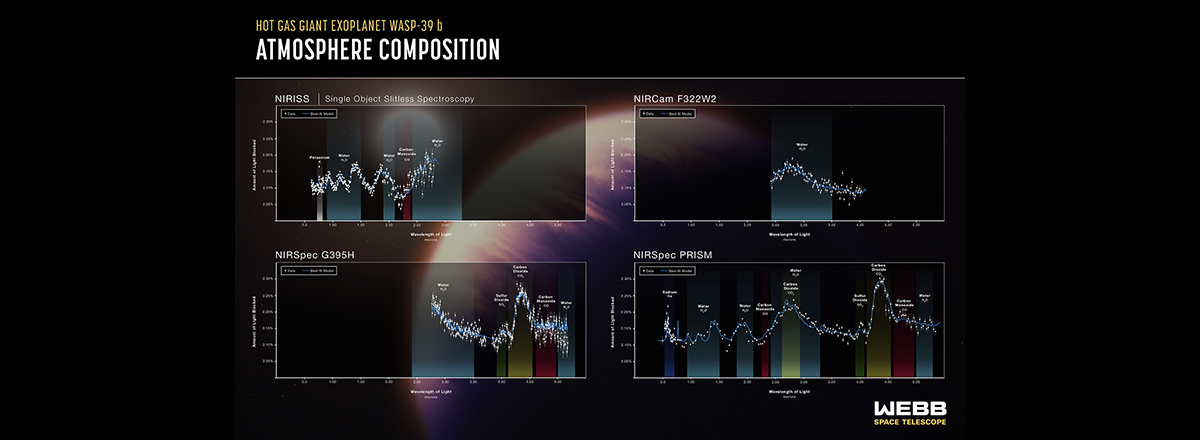NASA's Webb Studied the Atmosphere of an Alien Exoplanet in Detail
The planet's atmosphere is composed of sulfur and silicates. When they interact with the parent star's light, they produce sulfur dioxide – this is the first time such a compound has been found in the atmosphere of an exoplanet.

The James Webb telescope was able to study the atmosphere of a distant exoplanet, a gas giant dubbed WASP-39b, in more detail than ever before. The exoplanet orbits a parent star in the constellation Virgo and is located about 700 light years away from the Sun.
The size of WASP-39b is comparable to that of Jupiter, and its mass to Saturn. However, it rotates about as close to its star as Mercury does to the Sun. As a result, WASP-39b gets very hot: the temperature there reaches 900°C.
Exoplanets are usually detected using the transit method: a planet revolves around its star and passes right in front of it at some point, changing its brightness, which makes it possible for scientists to detect it. As the planet transits, some light goes through its atmosphere, and that light can be analyzed to determine which elements are contained in the atmosphere of an exoplanet.
Using this method, scientists found that this exoplanet has sulfur dioxide. The planet's atmosphere is composed of sulfur and silicates. When they interact with the parent star's light, they produce sulfur dioxide – this is the first time such a compound has been found in the atmosphere of an exoplanet. In addition, the information obtained allows scientists to draw conclusions about the formation of the planet.
For example, the ratios of carbon to oxygen, of potassium to oxygen, and of sulfur to hydrogen indicate that the exoplanet must have formed from the collision of several smaller planetesimals.
The researchers point out that this is a new level of observation of exoplanets, which will make it possible to determine the presence of biological life on them in the future.

